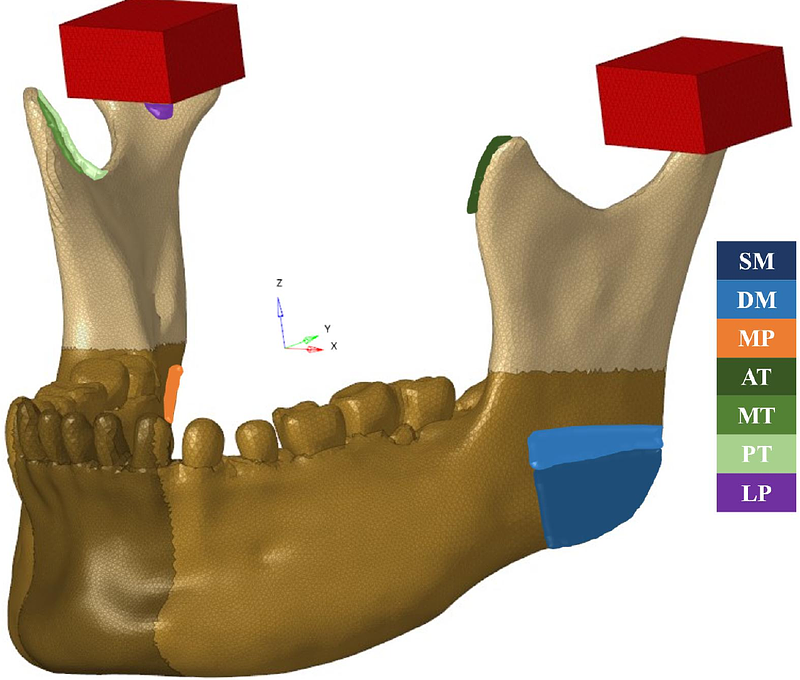Influence of simplifications on FE modelling of mandible and TMJ implants

Influence of simplifications on FE modelling of mandible and TMJ implants
Chandra, G.; Verma, V.; Ghosh, R.; Kaur, K.; Roychoudhury, A.; Mukherjee, S.; Chawla, A.; Mukherjee, K.
AbstractEnd-stage temporomandibular joint (TMJ) disorder often requires for replacement of TMJ for restoring bilateral mastication. Patient-specific TMJ implants often require detailed in-silico modelling based on subject-specific computed tomography (CT) scans of mandibles. However, creating these detailed finite element (FE) models is time-consuming and laborious due to segmentation of multiple components to appropriately capture the anatomical structure. Although it is known that any simplifications in the structure of mandible would influence its overall mechanical behaviour, influence of such modelling simplifications on TMJ implant design has hardly been investigated. Hence, this study investigates the biomechanical implications of following three model simplifications for intact and implanted mandibles: a detailed segmented mandible with tissue-specific material properties (Model 1), a simplified mandible made of cortical bone only (Model 2), and a further simplified mandible with dental crowns being excluded and made of cortical only (Model 3). For implanted mandible models, both narrow and standard TMJ implants were considered under both osseointegrated and non-osseointegrated conditions. Thus, a total of 15 FE models of intact (three) and implanted (12) models were developed. Physiological clenching activities were considered and the mechanical behaviour of intact and implanted mandibles were evaluated. Results revealed an overall reduction of 22-49% in principal stress, 16-50% in principal strain on bone and up to 79% in von Mises stress in TMJ implants in the biomechanically simplified model compared to the detailed segmented mandible model. It emphasizes the critical role of detailed mandible segmentation and material modelling to obtain reliable biomechanical evaluations of TMJ-TJR procedures.